26th August, 2025
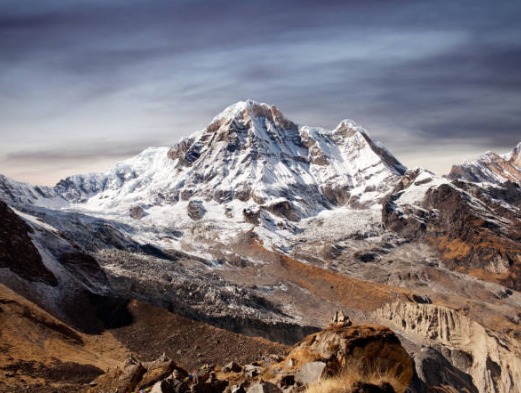
Sep 13, 2023
Annapurna Base Camp Trek In July
- Highlights of ABC Trek in July
- Why Annapurna Base Camp Trek in July
- Is it Safe to Trek to ABC in July?
- Guide, Porter, Food, and Permit
- Can I do Annapurna Base Camp Trek from Pokhara?
- Can I do ABC Trek without a Guide?
- Weather, Climate & Temperature in ABC Trek in July
- Tips for Annapurna Base Camp Trek in July
- Acclimatization and Altitude Sickness during ABC Trekking
- Estimated Cost of Annapurna Base Camp Trek in July
- Preparation Before the Annapurna Base Camp Trek Starts
- Packing Lists for Annapurna Base Camp Trek in July
- Conclusion
- Annapurna Base Camp Trekking packages
The Annapurna Base Camp (ABC) Trek, nestled in the heart of Nepal’s majestic Himalayas, is a journey that offers an unforgettable adventure for trekkers seeking to experience the raw beauty of nature. Although traditionally popular from September to November, undertaking the ABC trek in July presents a unique opportunity to explore this stunning region during the monsoon season.
July is characterized by lush greenery, with the rhododendron forests and terraced fields in full bloom, creating a vivid tapestry of colors against the backdrop of towering snow-capped peaks. The monsoon rains bring a fresh vibrancy to the landscape, and the trails, though occasionally wet and muddy, are less crowded compared to the peak trekking season. This quieter experience allows trekkers to immerse themselves in the serene ambiance of the Annapurna region without the usual hustle and bustle.

ANNAPURNA BASE CAMP TREK 11 DAYS
The 11 day Annapurna Base Camp Trek is one of the most popular treks and destinations in Nepal and will take you into the protected Annapurna Conservation Area with its beautiful scenery and will give...
The trek begins from Nayapul and gradually ascends through charming villages like Ghorepani and Poon Hill, offering breathtaking sunrise views of the Annapurna and Dhaulagiri ranges. As you move towards the base camp, the scenery transforms, revealing awe-inspiring glacial valleys and snow-clad peaks. Despite the challenges posed by the weather, including occasional rainfall and potential leeches, July's trek rewards adventurers with an intimate encounter with nature and a sense of solitude rarely found during the busier months.
Highlights of ABC Trek in July
Trekking to Annapurna Base Camp (ABC) in July offers a distinctive experience compared to other times of the year. The monsoon season transforms the landscape into a lush, green paradise, with blooming rhododendron forests and vibrant meadows. The trails, while occasionally muddy, present fewer crowds, allowing trekkers to enjoy a more serene and personal connection with nature. The rain often clears the air, providing crystal-clear views of the majestic Annapurna and Dhaulagiri ranges. Waterfalls are in full flow, enhancing the scenic beauty of the trek. The lower altitude sections, such as Ghorepani and Poon Hill, are particularly lush and verdant, offering spectacular sunrise views over the Annapurna Massif. Additionally, the lower foot traffic means a more intimate trekking experience with local cultures. However, trekkers should be prepared for the occasional rain, slippery trails, and the need for waterproof gear. Overall, trekking to ABC in July offers a unique and tranquil adventure amidst the monsoon's vibrant refreshment.
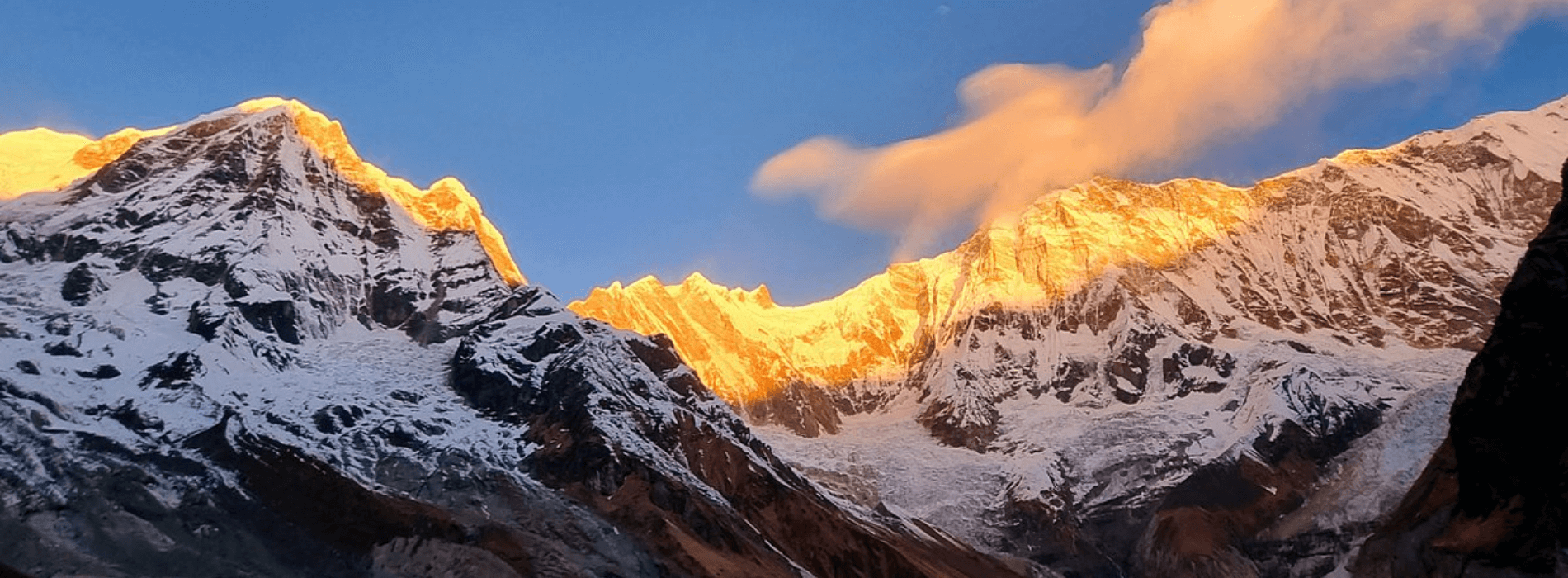
ANNAPURNA BASE CAMP TREK 10 DAYS
This 10 days Annapurna Base Camp (ABC) trek brings you into the heart of Nepal's Himalayas from the very being of the hike. With so many snow-capped peaks on the show, it is no surprise this one-week-...
Why Annapurna Base Camp Trek in July
Choosing to trek to Annapurna Base Camp (ABC) in July presents a chance to experience the Himalayas in a unique and refreshing way. July falls during the monsoon season, bringing lush green landscapes, blooming flora, and fewer tourists. The rain transforms the surroundings into a verdant paradise, and the lower number of trekkers provides a more peaceful and personal experience on the trails. Despite the occasional showers and muddy paths, the monsoon clears up often, offering spectacular views of the Annapurna and Dhaulagiri ranges. The trek also benefits from the cooler temperatures in the high altitudes, which are pleasant compared to the summer heat in lower regions. Moreover, the monsoon season ensures that rivers and waterfalls are full and flowing, adding to the trek's scenic beauty. For those who don't mind the wet conditions, July is an excellent time to enjoy a more solitary trek and witness the rejuvenated natural splendor of the Himalayas.
Is it Safe to Trek to ABC in July?
Trekking to Annapurna Base Camp (ABC) in July involves certain risks due to the monsoon season, but it can be safe with proper preparation. The primary concern is the heavy rainfall, which can make trails slippery and increase the risk of landslides. Trekkers should be equipped with waterproof gear and sturdy trekking shoes to handle muddy and wet conditions. The monsoon also brings a higher chance of leeches, particularly in lower altitudes, so appropriate clothing and precautions are essential. However, the rainfall often clears quickly, providing good visibility and stunning views of the mountains. Avalanches are rare during the monsoon but still possible, so staying updated with weather forecasts and local advisories is crucial. It’s also advisable to trek with a guide or join a group for added safety and support. Despite these considerations, with careful planning and attention to weather conditions, trekking to ABC in July can be a rewarding and safe adventure.

ANNAPURNA BASE CAMP TREK 9 DAYS
The Annapurna Base Camp (ABC) (4130m) is also known as the "Annapurna Sanctuary Trek". This trek promises “in-your-face” unprecedented views of colossal Himalaya ranges, which include Hiunchuli, Macha...
Guide, Porter, Food, and Permit
When undertaking the Annapurna Base Camp (ABC) trek, especially in July, it's essential to consider various logistical aspects like guides, porters, food, and permits. Hiring a local guide and porter is highly recommended, particularly in the monsoon season when trails can be challenging. Guides offer invaluable knowledge about the route, weather conditions, and local culture, while porters help carry your luggage, ensuring a more comfortable trek. Food along the route is typically provided by teahouses, offering a range of options including local dishes and international fare. It’s wise to carry some snacks for energy, as menu options might be limited in more remote areas. Permits are required for the ABC trek, including the Annapurna Conservation Area Permit (ACAP) and the TIMS (Trekkers' Information Management System) card. These can be obtained in Kathmandu or Pokhara. Ensuring all permits are secured and arrangements are made ahead of time will make your trek smoother and more enjoyable. Overall, proper planning regarding guides, porters, food, and permits is crucial for a successful trek to ABC.
Can I do Annapurna Base Camp Trek from Pokhara?
Yes, it is possible to do the Annapurna Base Camp (ABC) trek starting from Pokhara, which is a popular choice for many trekkers. Pokhara, a scenic city located approximately 200 kilometers from Kathmandu, serves as a convenient gateway to the Annapurna region. From Pokhara, you can take a short drive or a local bus to Nayapul, the starting point of the ABC trek. The journey from Pokhara to Nayapul typically takes around 1.5 to 2 hours by road. Starting from Nayapul, the trek progresses through picturesque villages and lush landscapes, gradually ascending towards the base camp. Choosing to start from Pokhara provides a more relaxed approach to the trek, allowing trekkers to enjoy the beautiful surroundings and acclimate before the hike. Additionally, Pokhara offers a range of accommodations and services that can help with last-minute preparations. Overall, starting the ABC trek from Pokhara is a practical and enjoyable option that many trekkers prefer for its accessibility and the opportunity to explore the area before setting off on the trek.
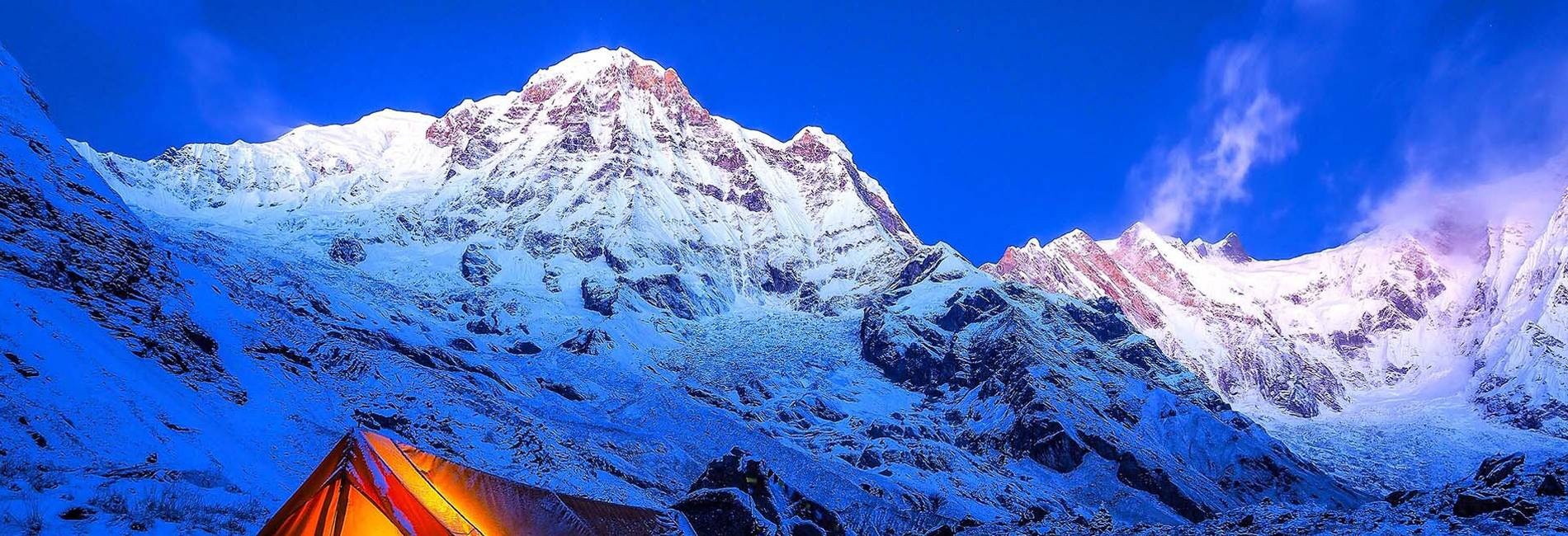
ANNAPURNA BASE CAMP TREK 8 DAYS
The 8 days Annapurna Base Camp Trek is the most popular and amazing trek in the Annapurna region which offers combines remarkable Himalaya vistas, traditional Gurung and Magar village life, and dense...
Can I do ABC Trek without a Guide?
While it is possible to trek to Annapurna Base Camp (ABC) without a guide, doing so requires careful preparation and self-sufficiency. Trekking independently means you must be well-versed in navigation and aware of the potential risks, such as changing weather conditions and trail hazards, particularly during the monsoon season. The trails to ABC are well-marked, and many trekkers successfully navigate the route without a guide. However, having a guide offers several advantages, such as local knowledge, assistance with logistics, and support in case of emergencies. Guides can also enhance your experience by providing insights into the local culture and environment. Without a guide, you should ensure you have a detailed map, a reliable GPS device, and a thorough understanding of the route. Additionally, it’s important to have a good level of fitness and experience with trekking in varying weather conditions. While trekking independently offers a sense of freedom, it also demands greater self-reliance and preparedness.
Weather, Climate & Temperature in ABC Trek in July
In July, the weather on the Annapurna Base Camp (ABC) trek is influenced by the monsoon season. Expect frequent rainfall and high humidity, which significantly impact trail conditions. Temperatures in July typically range from 15°C to 20°C (59°F to 68°F) at lower altitudes, such as in Pokhara and Nayapul, while temperatures at ABC can drop to around 0°C to 5°C (32°F to 41°F) at night. During the day, it can be relatively warm, but the weather is unpredictable, with sudden downpours and mist that may obscure views. Despite these challenges, the rain nourishes the lush greenery and results in vibrant landscapes and full waterfalls. The higher altitudes can experience cooler temperatures, and trekkers should be prepared for cold nights, especially as they ascend. Waterproof gear and layered clothing are essential to handle the wet and varying temperatures effectively. The monsoon rains may also cause slippery trails, so good traction and caution are necessary. Overall, while trekking in July offers a unique and lush environment, preparedness for wet conditions and temperature fluctuations is crucial.
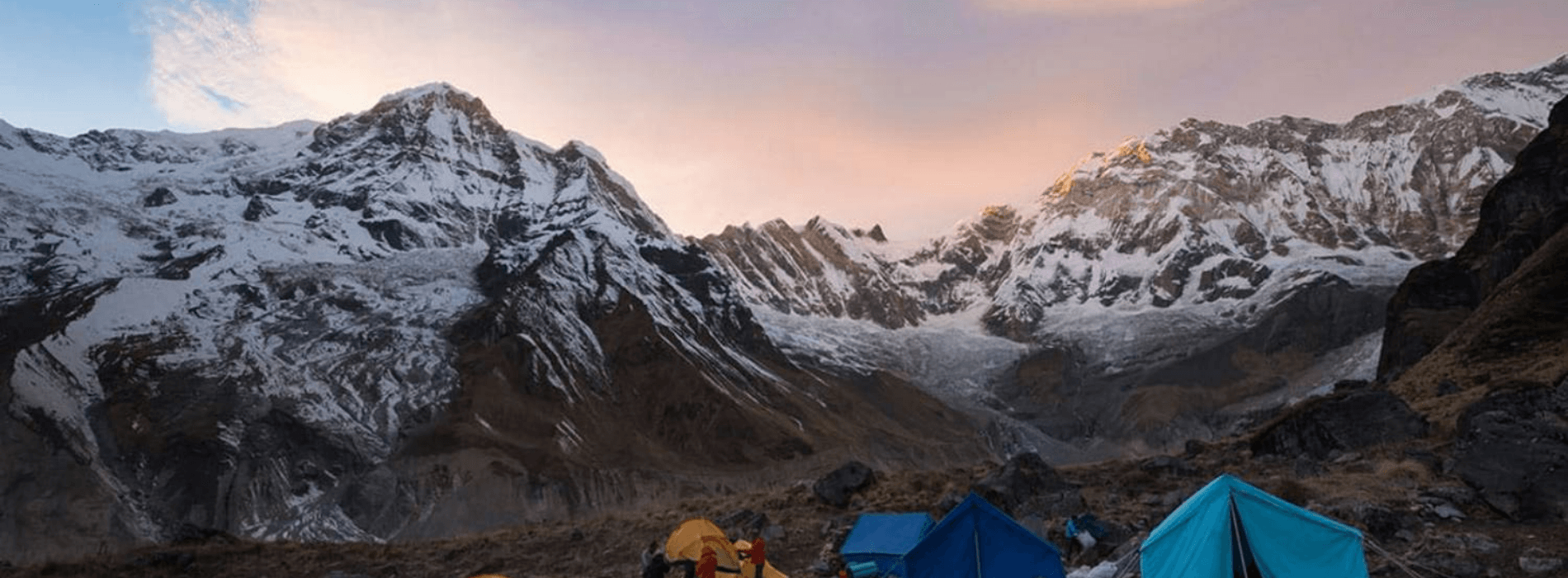
ANNAPURNA BASE CAMP TREK 6 DAYS
The 6 days Annapurna Base Camp Trek is an ideal adventure for those people who have a tight schedule but still want to experience the amazing landscape and the fascinating lifestyles of the Gurung cul...
Tips for Annapurna Base Camp Trek in July
Trekking to Annapurna Base Camp (ABC) in July can be an incredible experience if you prepare well. First, be prepared for heavy rainfall and muddy trails; invest in high-quality waterproof gear, including a rain jacket, pants, and trekking poles. Waterproofing your gear and ensuring good traction with sturdy, non-slip trekking shoes will enhance your comfort and safety. Carrying essential items like a good quality map, GPS, and a first aid kit is crucial for navigation and emergencies. Since July is a quieter trekking month, you’ll enjoy fewer crowds, but make sure to book teahouse accommodations in advance to secure your stay. Pack light but include necessary items such as warm layers for cooler nights, even in the monsoon. Staying hydrated and carrying snacks is important, as food availability may vary. Be ready to adapt your itinerary due to weather conditions; flexibility can help you make the most of your trek. Lastly, respecting local customs and practicing Leave No Trace principles will enhance your trekking experience and preserve the environment. With careful planning, trekking to ABC in July can be a rewarding and less crowded adventure.
Acclimatization and Altitude Sickness during ABC Trekking
Acclimatization is crucial for a safe and enjoyable Annapurna Base Camp (ABC) trek, particularly given the altitude and the potential for altitude sickness. The trek involves significant elevation gain, reaching over 4,000 meters (13,000 feet) at ABC. To mitigate the risk of altitude sickness, it’s essential to ascend gradually and allow time for your body to adjust. Typically, trekkers should plan to increase their altitude slowly and incorporate acclimatization days into their itinerary, such as a rest day at places like Ghorepani or Chhomrong. Symptoms of altitude sickness include headaches, nausea, dizziness, and fatigue, and they can appear suddenly. If you experience these symptoms, it’s crucial to descend to a lower altitude and seek medical attention if needed. Drinking plenty of water, eating a high-carbohydrate diet, and avoiding alcohol can help your body acclimatize more effectively. Additionally, consider carrying medication like Diamox (acetazolamide) if prescribed by a healthcare provider. Proper acclimatization is key to enjoying your trek and ensuring your safety as you reach the stunning Annapurna Base Camp.
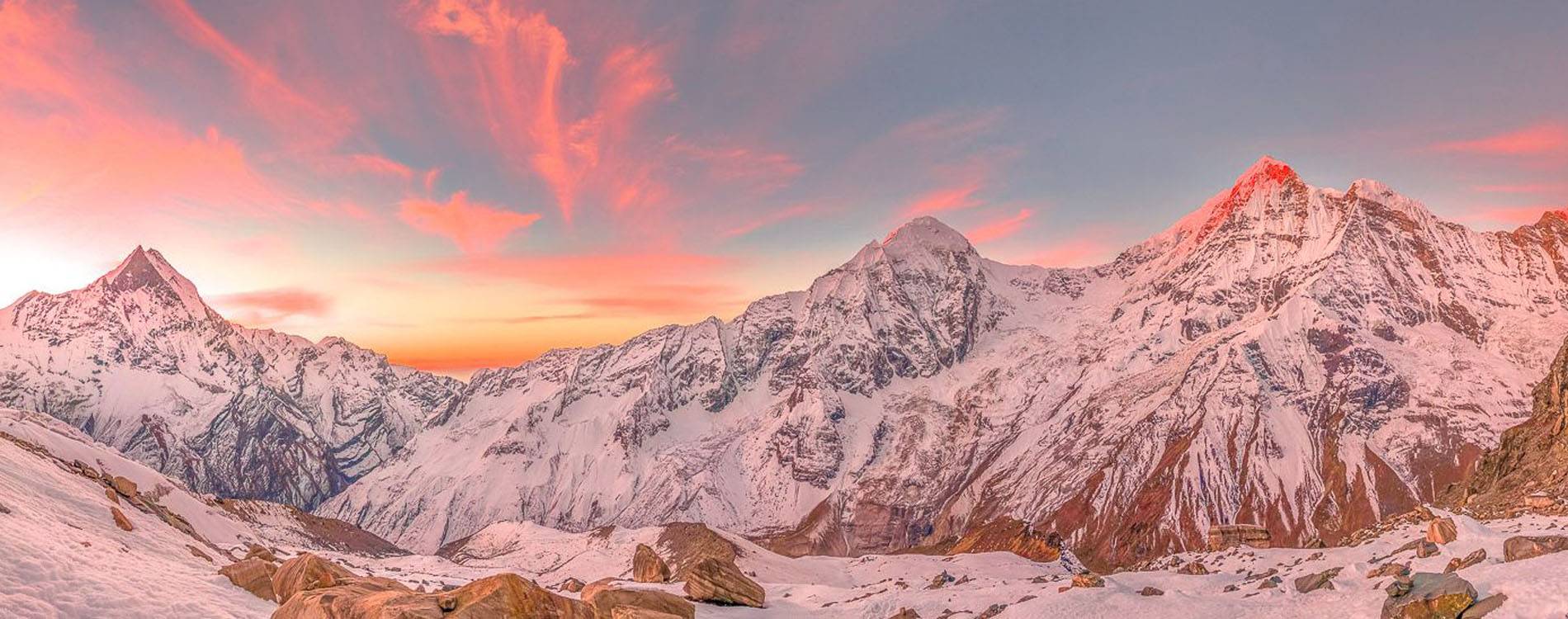
7 DAYS ANNAPURNA BASE CAMP TREK
Short on time – big on beauty!The 7 days Annapurna Base Camp Trek takes you to all the major attractions – but in less time than other treks to the Annapurna region. Take in the spectacular soaring sn...
Estimated Cost of Annapurna Base Camp Trek in July
The estimated cost of the Annapurna Base Camp (ABC) trek in July can vary based on several factors, including travel preferences, group size, and services chosen. On average, the trek costs between $600 to $1,200 per person. This estimate typically includes permits, guide and porter fees, accommodation, and some meals. The Annapurna Conservation Area Permit (ACAP) and TIMS card usually cost around $50 to $60 combined. Hiring a guide can cost approximately $20 to $30 per day, while a porter may charge around $15 to $25 per day. Teahouse accommodations range from $5 to $15 per night, depending on the location and season. Meals on the trek generally cost between $5 to $10 per meal. Additional costs might include transportation from Kathmandu or Pokhara to Nayapul, which can add around $50 to $100. It’s also wise to budget for personal expenses, tips, and emergency funds. Planning and booking in advance can help manage costs effectively and ensure a smoother trekking experience. Always check current prices and make arrangements according to your budget and preferences.
Preparation Before the Annapurna Base Camp Trek Starts
Proper preparation is essential for a successful Annapurna Base Camp (ABC) trek, especially in July. Begin by obtaining necessary permits, including the Annapurna Conservation Area Permit (ACAP) and TIMS card. Consult with a trekking agency or local experts to finalize your itinerary and book accommodations. Ensure that you have all required gear, including waterproof clothing, good quality trekking boots, and layered clothing for varying temperatures. Physical preparation is crucial; engage in cardio, strength training, and long hikes to build endurance. Familiarize yourself with altitude sickness symptoms and treatment, and consult a healthcare provider about necessary vaccinations and medications. Pack essential items such as a first aid kit, water purification tablets, and energy snacks. Additionally, make travel arrangements for reaching the starting point of the trek and ensure you have travel insurance that covers trekking activities. Check weather forecasts and be ready to adapt your plans if necessary due to monsoon conditions. Finally, educate yourself on local customs and environmental practices to ensure a respectful and enjoyable trek. Adequate preparation will enhance your trekking experience and help you handle any challenges that may arise.
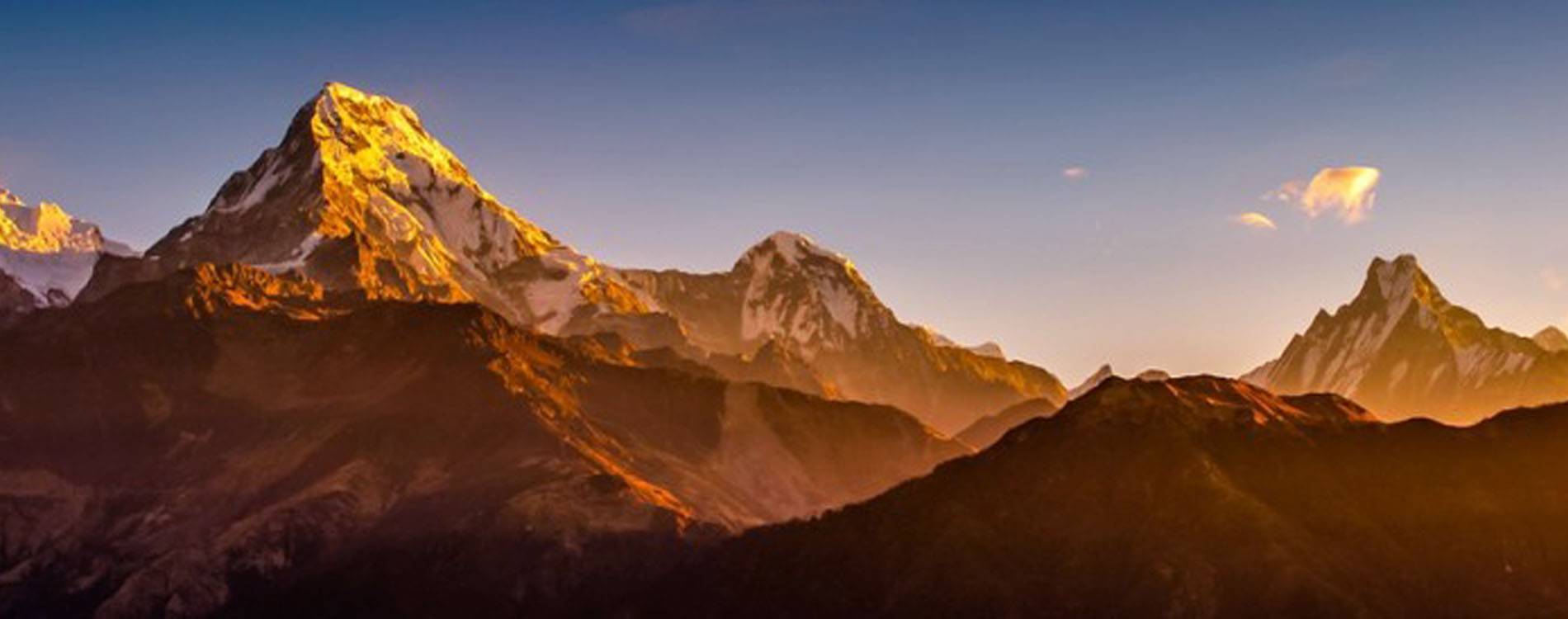
12 DAYS ANNAPURNA BASE CAMP TREK
DOUBLE THE ADVENTURE IN JUST 12 DAYS! The 12 Day Annapurna Base Camp Trek combines two well-known and popular treks into one - the Ghorepani Poon Hill Trek and the Annapurna Base Camp Trek (ABC)....
Packing Lists for Annapurna Base Camp Trek in July
When trekking to Annapurna Base Camp (ABC) in July, packing efficiently is crucial due to the monsoon conditions. Essential items include:
- Clothing:
- Waterproof jacket and pants
- Lightweight, moisture-wicking base layers
- Insulating fleece or down jacket for cooler temperatures
- Trekking pants and shorts
- Warm hat and gloves for high altitudes
- Sun hat and sunglasses for UV protection
- Footwear:
- Waterproof trekking boots with good ankle support
- Lightweight trekking shoes or sandals for rest stops
- Gear:
- Trekking poles with rubber tips
- Durable backpack with rain cover
- Sleeping bag rated for cold temperatures
- Personal first aid kit
- Water bottles and purification tablets
- Miscellaneous:
- Sunscreen and lip balm with SPF
- Energy snacks and high-carb food
- Camera and extra batteries
- Maps and GPS device
- Documents:
- Annapurna Conservation Area Permit (ACAP)
- TIMS card
- Travel insurance details
Packing these essentials will ensure you are well-prepared for the diverse conditions of the ABC trek in July, enhancing your comfort and safety throughout the journey.
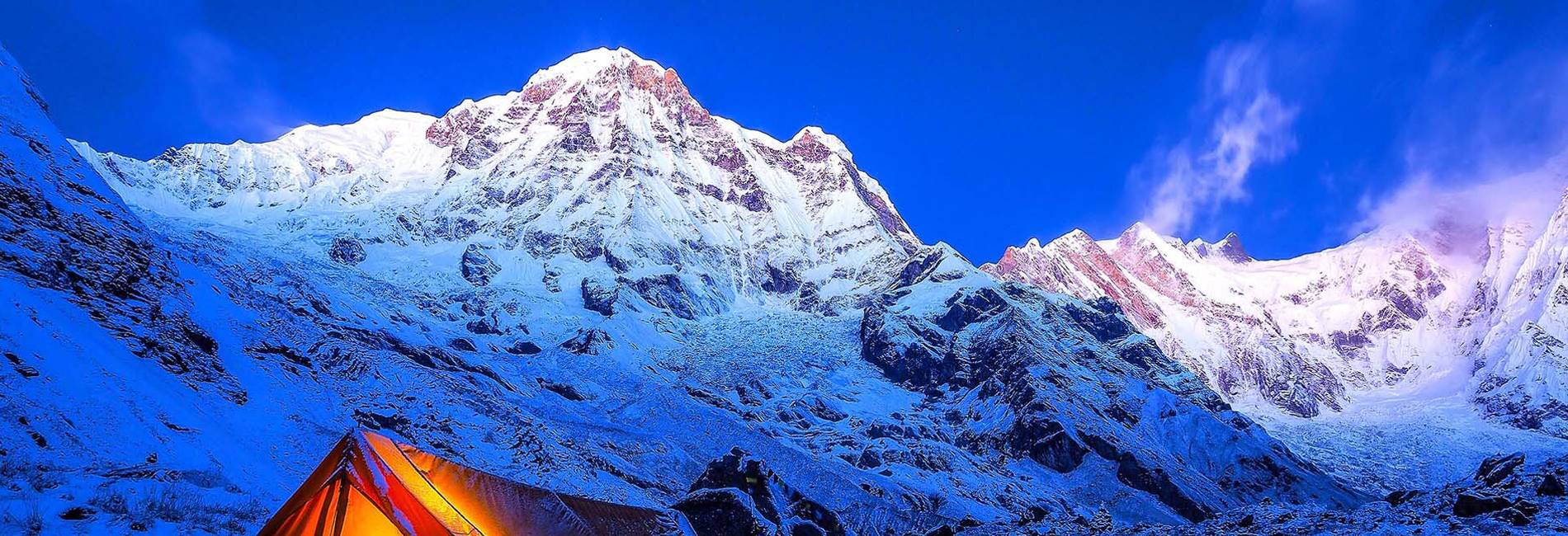
13 DAYS ANNAPURNA BASE CAMP TREK
Discover why “The Annapurna Base Camp (ABC) trek is world-famous. Here is a sample of soaring snow-capped peaks you will see along the trail: Mt. Dhaulagiri (8167m), Mt. Annapurna I (8091m) Mt. M...
Conclusion
Trekking to Annapurna Base Camp (ABC) in July offers a unique and serene experience amidst the lush, monsoon-kissed landscape of the Himalayas. While the monsoon season brings vibrant greenery and fewer crowds, it also requires careful planning and preparation. Understanding the weather patterns, ensuring proper acclimatization, and being prepared for possible altitude sickness are crucial for a successful trek. Estimating costs and preparing a detailed packing list can help manage expenses and ensure you have all necessary gear. Proper preparation before the trek, including obtaining permits and booking accommodations, will enhance your trekking experience. Despite the challenges of the monsoon, trekking to ABC in July can be a rewarding adventure with spectacular scenery and a more intimate connection with the natural world. By following these guidelines and staying adaptable, you can make the most of your trek and enjoy the breathtaking beauty of Annapurna Base Camp.
Annapurna Base Camp Trekking packages
14 Days Annapurna Base Camp Trek
13 Days Annapurna Base Camp Trek
12 Days Annapurna Base Camp Trek
9 Days Annapurna Base Camp Trek
7 Days Annapurna Base Camp Trek
6 Days Annapurna Base Camp Trek

ANNAPURNA BASE CAMP TREK
The Annapurna Base Camp (ABC) Trek via Ghorepani Poon Hill Trek offers a truly unforgettable Himalayan adventure, combining stunning panoramic views with the rich cultural tapestry of the region. This...
Any Questions? Let Us Know.
Recent Posts
17th June, 2025


















